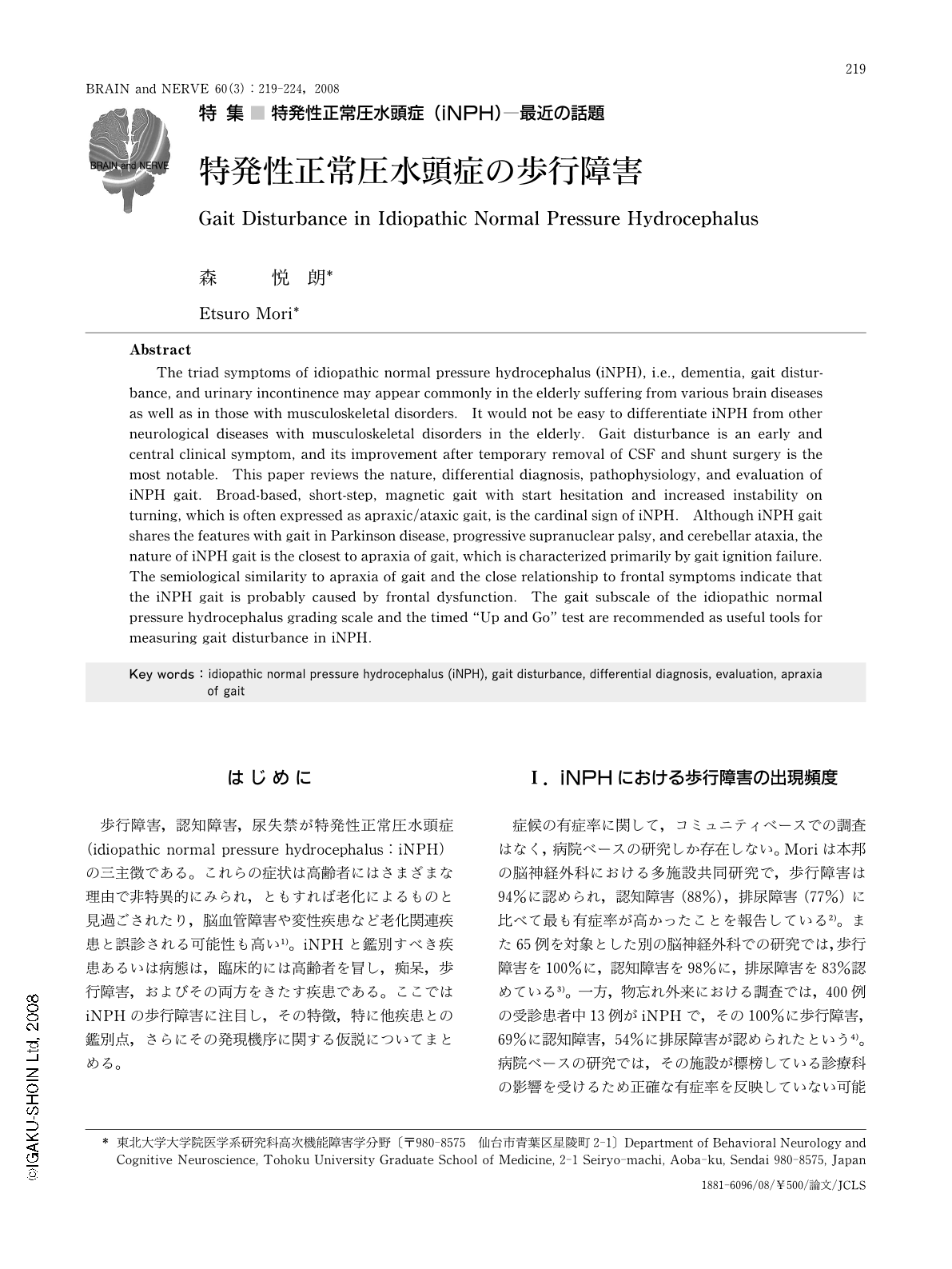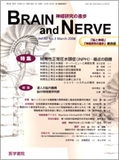Japanese
English
- 有料閲覧
- Abstract 文献概要
- 1ページ目 Look Inside
- 参考文献 Reference
はじめに
歩行障害,認知障害,尿失禁が特発性正常圧水頭症(idiopathic normal pressure hydrocephalus:iNPH)の三主徴である。これらの症状は高齢者にはさまざまな理由で非特異的にみられ,ともすれば老化によるものと見過ごされたり,脳血管障害や変性疾患など老化関連疾患と誤診される可能性も高い1)。iNPHと鑑別すべき疾患あるいは病態は,臨床的には高齢者を冒し,痴呆,歩行障害,およびその両方をきたす疾患である。ここではiNPHの歩行障害に注目し,その特徴,特に他疾患との鑑別点,さらにその発現機序に関する仮説についてまとめる。
Abstract
The triad symptoms of idiopathic normal pressure hydrocephalus (iNPH), i.e., dementia, gait disturbance, and urinary incontinence may appear commonly in the elderly suffering from various brain diseases as well as in those with musculoskeletal disorders. It would not be easy to differentiate iNPH from other neurological diseases with musculoskeletal disorders in the elderly. Gait disturbance is an early and central clinical symptom, and its improvement after temporary removal of CSF and shunt surgery is the most notable. This paper reviews the nature, differential diagnosis, pathophysiology, and evaluation of iNPH gait. Broad-based, short-step, magnetic gait with start hesitation and increased instability on turning, which is often expressed as apraxic/ataxic gait, is the cardinal sign of iNPH. Although iNPH gait shares the features with gait in Parkinson disease, progressive supranuclear palsy, and cerebellar ataxia, the nature of iNPH gait is the closest to apraxia of gait, which is characterized primarily by gait ignition failure. The semiological similarity to apraxia of gait and the close relationship to frontal symptoms indicate that the iNPH gait is probably caused by frontal dysfunction. The gait subscale of the idiopathic normal pressure hydrocephalus grading scale and the timed “Up and Go” test are recommended as useful tools for measuring gait disturbance in iNPH.

Copyright © 2008, Igaku-Shoin Ltd. All rights reserved.


